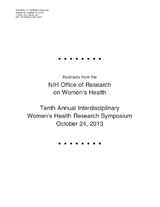Inhibition of peroxisome proliferator gamma (PPARɣ) : a potential link between chronic maternal hypoxia and impaired fetal growth

View/
Date
2013Author
Julian, Colleen Glyde
Yang, Ivana
Vargas, Enrique
Pedersen, Brent S
Moore, Lorna G
Schwartz, David
Metadata
Show full item recordAbstract
Background and Objective: Chronic maternal hypoxia impairs
fetal growth and increases the incidence of intrauterine growth restriction (IUGR). To identify the mechanisms underlying these hypoxia-related effects, we evaluated whether exposure to chronic
hypoxia during pregnancy alters maternal gene-expression patterns
relative to normoxic pregnancy and, if so, to define the dominant
genes and pathways involved.
Methods: Gene expression profiles were generated using NimbleGen Human Gene Expression microarrays for 79 peripheral blood
mononuclear cell samples collected from 43 women residing at high
(n = 25, 3600–4300m) or low (n = 18, 300m) altitude in the nonpregnant state or during pregnancy (20 or 36 weeks). Transcriptional
differences between altitudes were detected using Limma, Lme4, and
Car packages in R; the relationship of such differences to biological
processes and pathways was assessed in IPA.
Results: Gene expression differed at high versus low altitude in the
non-pregnant state(43 genes), at 20 weeks of pregnancy (59 genes) and
at 36 weeks of pregnancy (985 genes). Several genes of known pathologic significance for IUGR varied between altitudes during pregnancy
but not in the non-pregnant state. Among the pathways enriched by
these genes was the peroxisome proliferator-activated receptor gamma
(PPARc) signaling pathway. Transcriptional changes were consistent
with the negative regulation of PPARc at high versus low altitude
during pregnancy, but not in the non-pregnant state.
Conclusions: Pregnancy magnifies the influence of environmental
hypoxia on gene expression in ways that may be related to fetal
growth. Given its involvement in the regulation of inflammation,
vascular function, and glucose metabolism, we consider PPARc to be
an important candidate for future study.
